I like Cleese's metaphor of making a 'tortoise enclosure' to give creativity a safe space to emerge, which I wish more people understood. So I'm going to get on my soapbox about it.
Creating and maintaining a boundary of deliberate down time is difficult to do in a traditional workplace. I make a point of not answering the phone when I need a mental break, but there's fallout from that. People either get bent out of shape that I'm not immediately available to answer their call, or disguise their annoyance by breathlessly asking if I'm alright. Because I might just have been abducted by masked Tibetan throat-singers and whisked off to the icy mountains, where I will be forced to drink yak-butter tea for the rest of my days, all because I didn't answer my phone for a few hours. Or respond to my text messages. Or be online and visible via instant messenger.
There are some artists who can produce work that has discernible stages: you can see the start, the middle, the end, and the finished piece at any of its stages, and recognize it as work in progress. These are the designers and artists of the world who make control-freak clients very happy. At any point, the client can ask to see the work, and will be thrilled to be shown something that looks like a design or an illustration. Their creative process is methodical, workmanlike, and probably looks very professional from the outside. It has steps! Stages! You could use a Gantt chart to track their creativity! Those artists sit down at their desks and eagerly churn out product, don't mind being asked for updates, cope well with interruptions, and make any client who likes project management very happy. Their creative process is a mystery to me, but I suspect it involves a bullet list, outlines, and perhaps spreadsheets.
I am not one of those artists. My creative process:
- Get given a project
- Long stretch of apparently no work
- Snarl at people who interrupt my thinking
- Blindingly fast making-of-stuff
- Show finished project to client
You see the problem, I'm sure. My creative process, from the outside, pretty much looks like nothing, for most of the time that I'm working on something. Until someone gets used to working with me, it can be rough on them if they're not a kindred spirit. My process can make a methodical person's head explode from frustration that I am not doing things the way they would; which is to say, The One True Way to Do Things.
For a long time, I felt badly for not being a methodical artist. Being methodical is seen as the path of the righteous: working hard, being diligent, a good student, a good worker. Working the way I do, on the other hand, smacks of procrastination, laziness, doing nothing, and not taking assignments seriously. Just last week, as I was leaving for the day, I waited for the elevator with some coworkers from departments that are seriously left-brained and methodical. One of them teased me about how much 'nothing' I do all day… not realizing that my workload is about five times what theirs is. But I kept my mouth shut, because a minute-long elevator ride is not the time to get into it. Incidents like that, driven by the assumption that I do 'nothing,' have plagued me throughout my academic and professional life.
Rands describes this nagging feeling over at Rands in Repose:
Up To Nothing
Go back to work and think about your average day. How often are you not clear what you're doing? How often is the goal of the next 30 minutes completely undefined? Yes, you've suffered through meetings where there was no clear agenda and you felt like you were wasting your time, but that's still a known quantity -- I'm currently in the poorly run meeting scenario. Been there, done that.
What happens when there is no meeting, no burning task, no one in your office? You wander, you surf the web, you stare at that calendar on the wall and think, "Why do we have leap years again? I forget." And then you feel bad. I should be working. I should be doing something. They're not paying me to reverse engineer leap years. I have things to do.
You've built this guilt into your office. It's why your screen is not facing folks who walk through your door. You're worried: "They might see me doing nothing".
You're not up to nothing. You're aimlessly mentally wandering -- an act made famous by every bright idea ever had in the shower.
It's taken me decades to accept that trying to work in The One True Way to Do Things makes me miserable, unhappy, and results in subpar work. I simply cannot start making something until I can see it clearly in my head. That goes for writing, design, or art: unless I've thought out each aspect, I can't make it happen on the page, screen or canvas.
Now, let me be clear: working this way is not procrastination. I have deadlines; I plan out how much time each project will take; and I deliberately allow time to think about a project when I give an estimate of how long it will take me to finish it. It's also not a way to overlook the importance of craftsmanship and practice: if you think you're so talented that you don't need to regularly practice your skills, you're deluding yourself. It's setting aside time for decompressing and letting my brain be creative. It's building John Cleese's tortoise enclosure.

